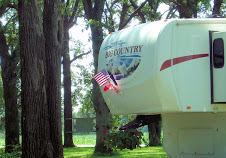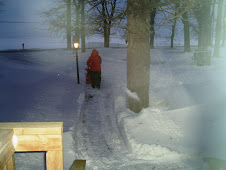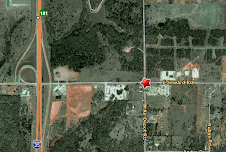
Driving into Webb City on Rt 66, you immediately notice a
town with pride in their heritage. The
large praying hands monument, the flag flying from a 100 ft flag pole, then the
area for statuary and monuments recalling the town’s history, the kneeling
miner and the wall dedicated to the electric rail, all located in King Jack
Park.
King Jack Park, Webb City’s 144
acre community park, has a fully restored operating streetcar and the
depot that is home to the area Chamber of Commerce. The first floor of the
power house is now a skating rink and the clubhouse is the headquarters for the
Webb City Historical Society.
The park is home to Parks and
Recreation youth baseball, softball, and soccer fields, located near the rodeo
grounds and tennis courts. There are
pavilions that serve as a Farmers Market and extensive walking trails. There are 2 fishing lakes being built next to
the Georgia City Bridge in the back of the park. The Georgia City Bridge is one the oldest
all-metal vehicular bridges still in existence in the state of Missouri. Built
in 1871, the one span, bowstring arch truss bridge now serves as a walking
bridge over Paradise Lake.
Webb City,
(Webbville), was platted by John C. Webb in September, 1875 and incorporated in
December, 1876, with a population of 700. The city was located on a
portion of Webb's 200 acre farm. There, in 1873, Webb discovered lead
while plowing. Twenty years later 700 mines were located within the
limits of Webb City and adjacent Carterville and the district ranked first in
the production of zinc ore.
The St. Louis and San Francisco Railroad came to Webb City in
1879, the Missouri Pacific in 1881. The population increased from 1,588
in 1880 to 9,201 in 1900.
A.H. Rogers built a mule street car line from Webb City to
Carterville, 1889. It was the
predecessor of the Southwest Missouri Electric Railway, established 1893.
The Southwest Missouri Railroad network expanded into Galena and Baxter
Springs, Kansas, as well as Picher, Oklahoma in 1917. When complete, the
electric railroad line encompassed some 94 miles, serving the Tri-State Mining
Field. In 1910, Southwest Missouri Electric Railway built a
Clubhouse for its employees, which was used for passing the time between
shifts. It was equipped with showers, beds, card and pool tables.
During World War I zinc and lead concentrates produced in the
Webb City-Carterville Prosperity District were valued at more than $18 million.
Webb City's population increased to some 15,000.
Mining declined during the post-World War I era but in the 1930s,
however, the town diversified. A number of factories were enticed to come to
the city: leather processing, shirts,
shoes, cigars, boxes, caskets, just to name a few. The area also expanded into the gravel
industry, shipping countless tons of gravel, chat, and sand all over the
country. In the 1930's and during World War II, explosives were manufactured by
powder plants located near Webb City.
In 1926, Route 66 was established, which ran right through
Webb City's downtown area. Route 66 continues south on US-71 Business Route
(Madison Street).























No comments:
Post a Comment